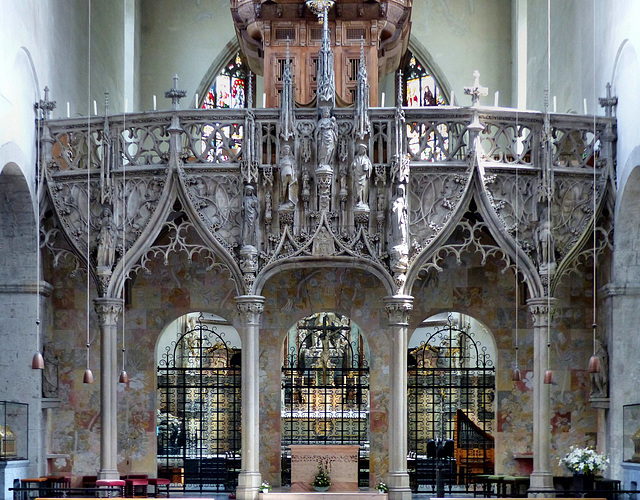Cologne - St. Pantaleon
Cologne - St. Pantaleon
Cologne - St. Pantaleon
Cologne - Marathon
Cologne - Marathon
Cologne - St. Severin
Cologne - St. Severin
Cologne - St. Severin
Cologne - St. Severin
Cologne - St. Severin
Cologne - Zugweg
Hospital
Cologne - Minoritenkirche
Cologne - Minoritenkirche
Cologne - Adolph Kolping
Cologne - Duns Scotus
Cologne - St. Maria in Lyskirchen
Cologne - St. Maria in Lyskirchen
Cologne - St. Maria in Lyskirchen
Cologne - St. Ursula
Cologne - St. Ursula
Cologne - St. Ursula
Cologne - St. Ursula
Cologne - St. Pantaleon
Cologne - St. Pantaleon
Cologne - St. Pantaleon
Cologne - Zolling
Cologne - Cathedral
Cologne - Helios
Cologne - Helios
Cologne - Alt St. Maternus
Cologne - Alt St. Maternus
Cologne - Alt St. Maternus
Cologne - Eigelsteintorburg
Cologne - Panorama
Cologne - Groß St. Martin
Cologne - Groß St. Martin
Cologne - Groß St. Martin
Cologne - Bäckerei Brockmann
Cologne - Wasserturm
Cologne - Cathedral
Cologne - St. Kunibert
Cologne - St. Kunibert
Cologne - St. Kunibert
Cologne - St. Kunibert
Location
Lat, Lng:
You can copy the above to your favourite mapping app.
Address: unknown
You can copy the above to your favourite mapping app.
Address: unknown
Keywords
Authorizations, license
-
Visible by: Everyone -
All rights reserved
-
246 visits
Cologne - St. Pantaleon


Cologne is the fourth-largest city in Germany - and one of the oldest. A Germanic tribe, the Ubii, had a settlement here, this was named by the Romans "Oppidum Ubiorum". In 50 AD, the Romans founded "Colonia Claudia Ara Agrippinensium", the city then became the provincial capital of "Germania Inferior".
A Roman villa once occupied the hill on which the church stands. Around 870 the first church got erected here and in 955 Archbishop Bruno the Great (brother of Emperor Otto the Great) added a Benedictine abbey. In 966, work was begun on a new church to go with the monastery. The church was consecrated in 980.
Holy Roman Empress Theophanu, who was married to Emperor Otto II in 972, ordered the construction of the current facade.
The monastery was dissolved after Cologne was occupied by French forces in 1794. The church served as a horse stable, and, when Cologne became Prussian in 1815, as a Protestant garrison church.
During World War II the roof, parts of the outer walls and a large part of the interior were destroyed, but after the war the church was restored.
The church is dedicated to Saint Pantaleon. This is probably connected to Otto II´s wife Theophanu, who was the niece of the Eastern Roman Emperor Johannes I. Tzimiskes. She brought not only relics to Cologne but as well skilled craftsmen, who may have settled near this church. The quarter still is named "Griechenmarkt" and in medieval times there was a "Porta Grecorum".
The late Gothic rod screen was erected in the early 16th century. Today it carries the organ.
A Roman villa once occupied the hill on which the church stands. Around 870 the first church got erected here and in 955 Archbishop Bruno the Great (brother of Emperor Otto the Great) added a Benedictine abbey. In 966, work was begun on a new church to go with the monastery. The church was consecrated in 980.
Holy Roman Empress Theophanu, who was married to Emperor Otto II in 972, ordered the construction of the current facade.
The monastery was dissolved after Cologne was occupied by French forces in 1794. The church served as a horse stable, and, when Cologne became Prussian in 1815, as a Protestant garrison church.
During World War II the roof, parts of the outer walls and a large part of the interior were destroyed, but after the war the church was restored.
The church is dedicated to Saint Pantaleon. This is probably connected to Otto II´s wife Theophanu, who was the niece of the Eastern Roman Emperor Johannes I. Tzimiskes. She brought not only relics to Cologne but as well skilled craftsmen, who may have settled near this church. The quarter still is named "Griechenmarkt" and in medieval times there was a "Porta Grecorum".
The late Gothic rod screen was erected in the early 16th century. Today it carries the organ.
Rob McMonigal, Marco F. Delminho have particularly liked this photo
- Keyboard shortcuts:
Jump to top
RSS feed- Latest comments - Subscribe to the comment feeds of this photo
- ipernity © 2007-2025
- Help & Contact
|
Club news
|
About ipernity
|
History |
ipernity Club & Prices |
Guide of good conduct
Donate | Group guidelines | Privacy policy | Terms of use | Statutes | In memoria -
Facebook
Twitter

Sign-in to write a comment.